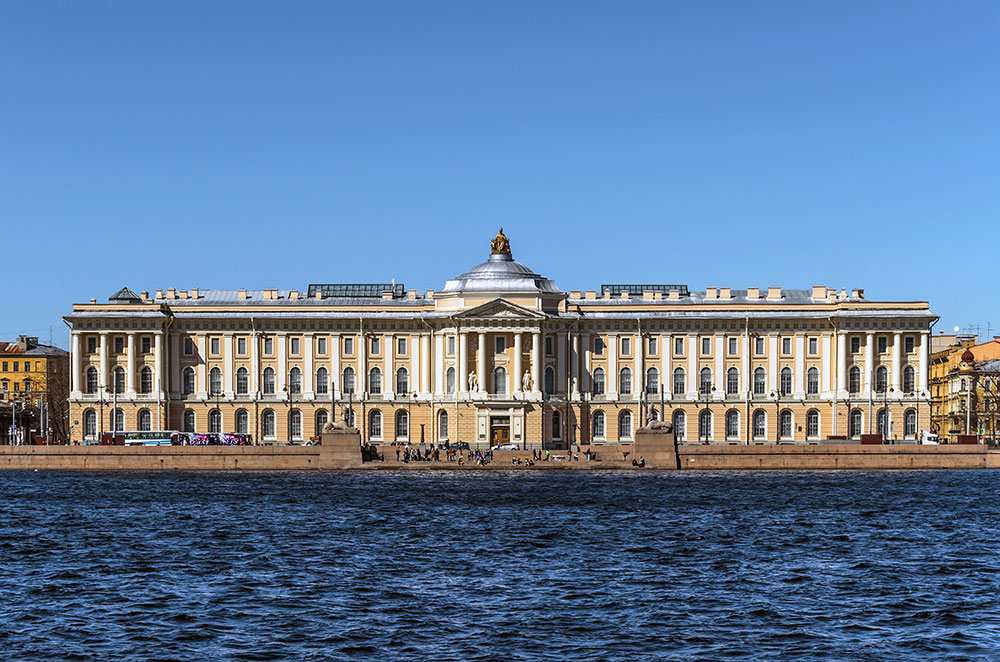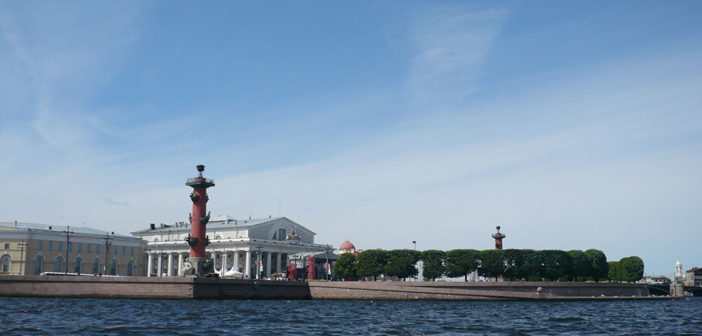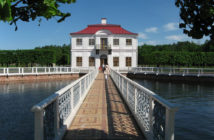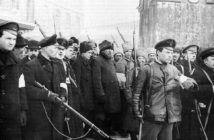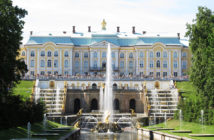Russian trading port
The spit of Vasilievsky Island existed as the main Russian trading port up to the end of the 19th century. There are two Rostral Columns, which were used as lighthouses. They are 32 meters high and are decorated with rostrums, which are replicas of prows of the ships. At the pedestals of two columns there are four allegorical figures of the Russian rivers: the Neva and Volkhov, the Volga and Dnieper. The columns were created by Thomas de Thomon.
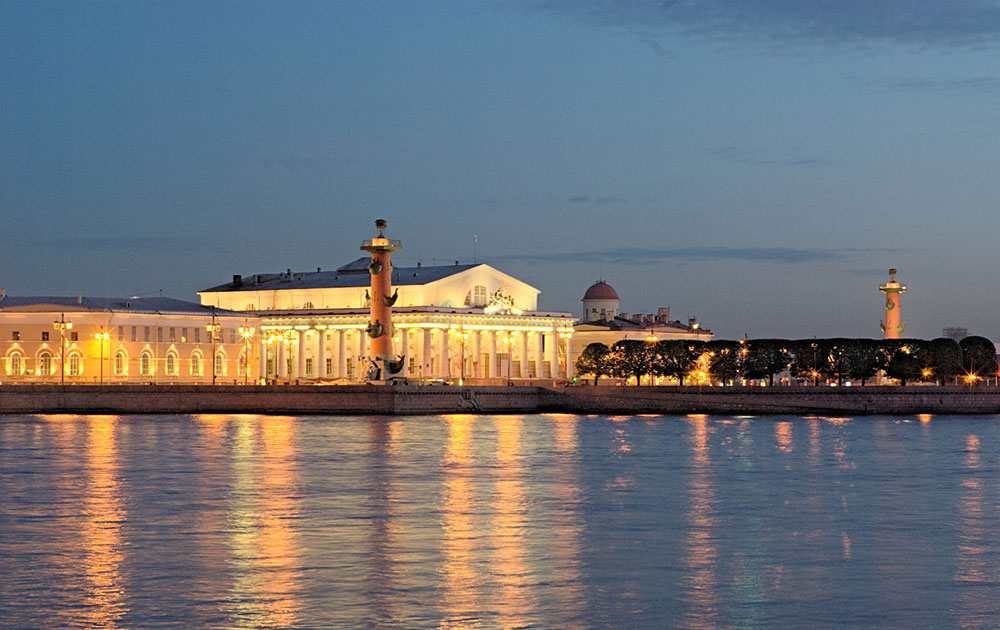
The ensemble of Vasilievsky island
The grey building with many columns was originally constructed for the stock exchange by architect Tomas deThomon. Now there is the Central Naval museumhere. You can learn the history of the Russian fleet there. The ensemble of the square in was completed with the two symmetrically put buildings of the warehouses and the former Custom’s House in 1820-1830-s. At present all the buildings accommodate the museums. One of the warehouses is the Zoological Museum, in the second one is the Museum of Soil E[ploration. The former Custom’s House is the Institute of Russian Literature.
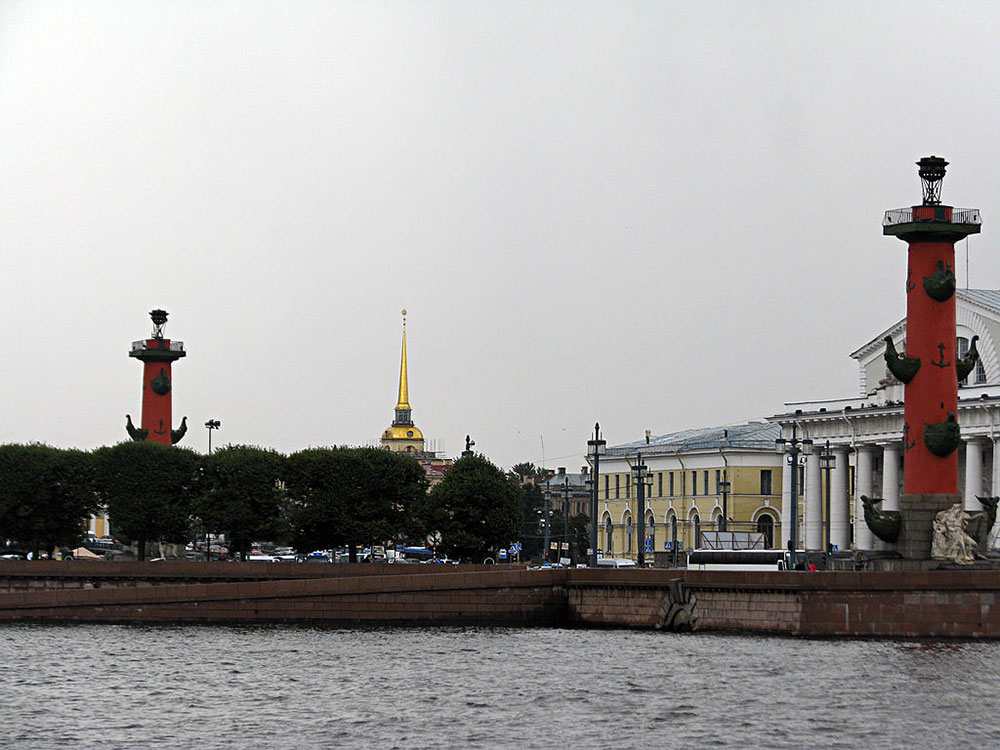
Museum of anthropology and Ethnography
The Chamber of Curiosities was built in 1718-1734 by Mattarnovi and Zemtsov. It was the first public museum in Russia founded by Peter I in 1714 and based on his private collections brought back from his European travels. One of the collections is 2000 anatomic preparations purchased by Peter I in Holland. Today it houses the Academy of Sciences Museum of Anthropology and Ethnography of the Peoples of the World and Lomonosov’s Memorial Museum.
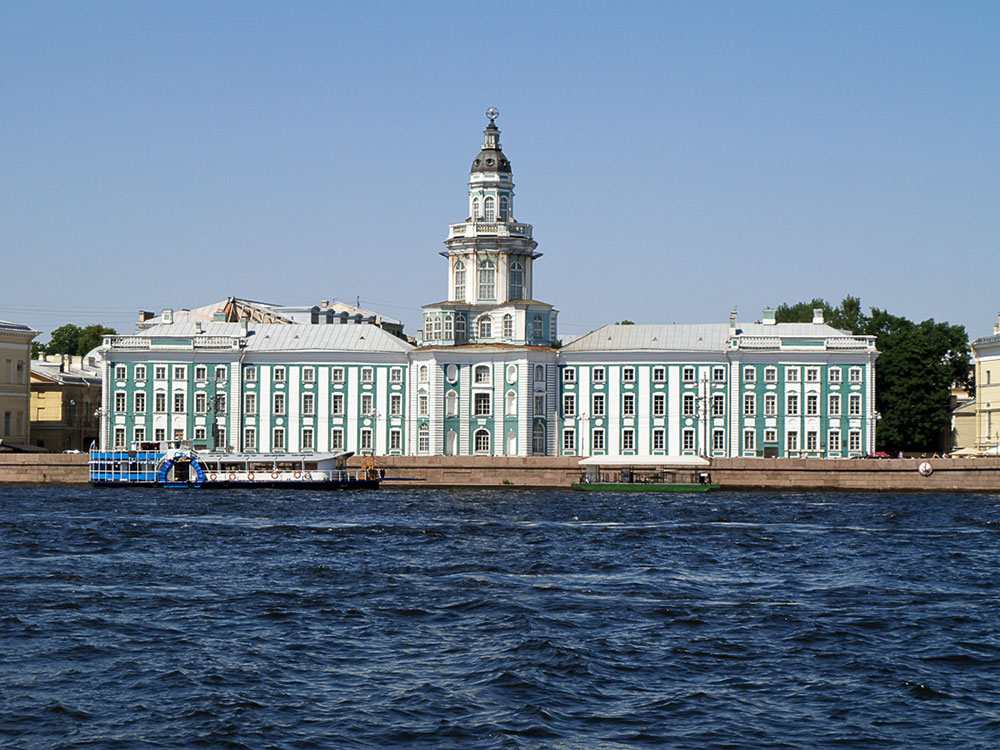
Monument to Michael Lomonosov
Monument to Michael Lomonosov was unveiled in 1985. He was the first Russian born scientist, the founder of the Russian Grammar system and an artist.
The Twelve Collegia building
The Twelve Collegia building is one of the oldest in the city. It was constructed in 1722-42 by Trezziny for the highest bodies of the state power in Russia- the Senate and the twelve Ministries (Collegia) established by Peter the Great. In 1819 the St. Petersburg University moved here. Among its graduates were Pavlov, Sechenov, Mechnicov, Turgenev, Mendeleev, and many others.
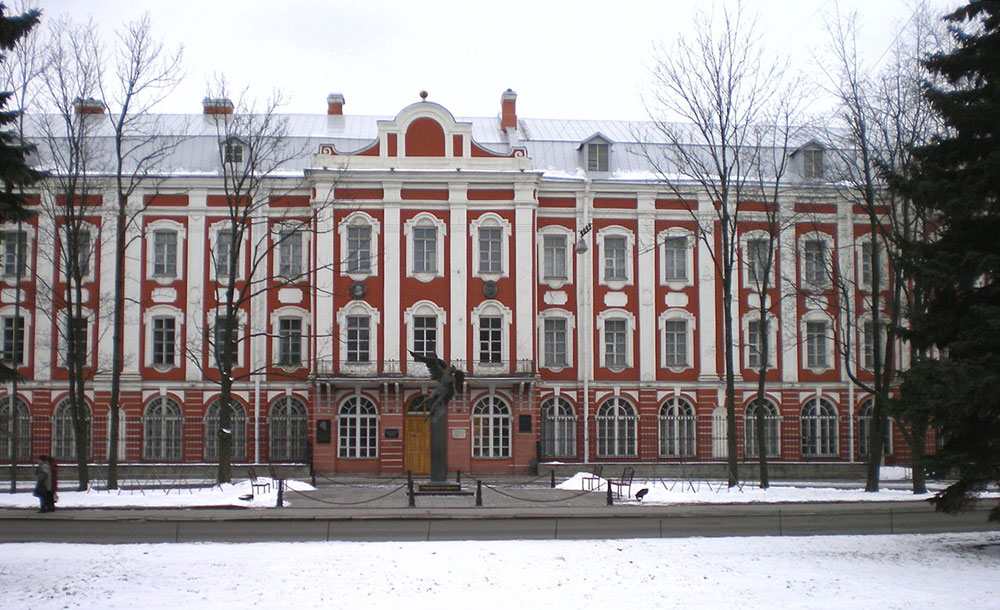
Academy of Sciences
The Academy of Sciences as founded by Peter I in 1724 and originally located in another place. In 1783 –85 this building was put to the design of G. Quarenghi. In 1934 it was transferred to Moscow.
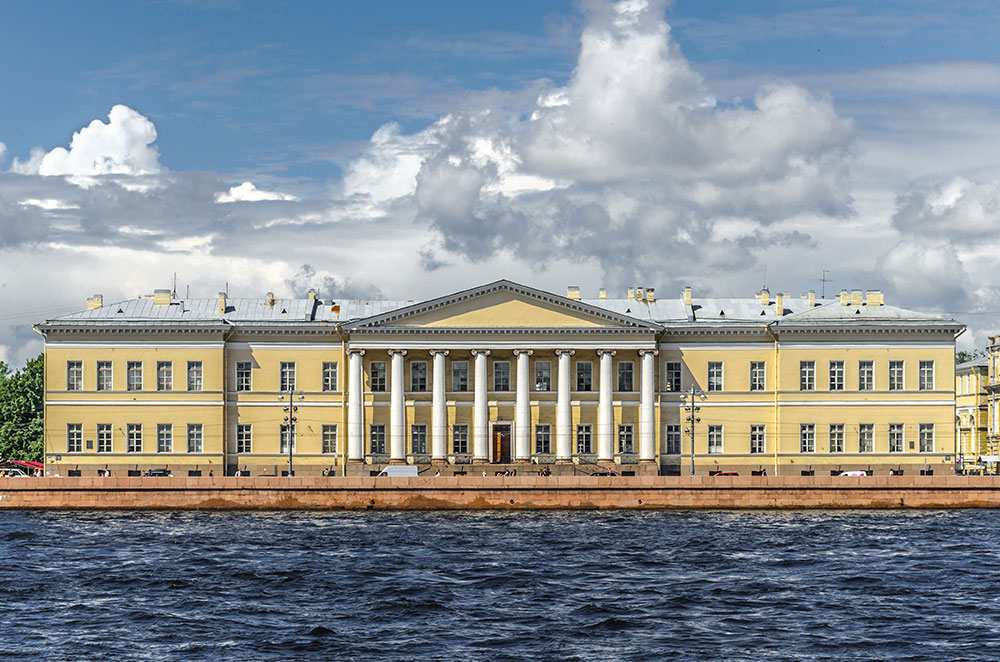
The Menshikov Palace
The Menshikov Palace was constructed to the project of Fontana and Schadel in 1710-14. This is the former residence of Prince Alexander Menshikov, who was the first General Governor of St. Petersburg and the closest friend of Peter I. The palace is the first stone building in the city. Now it is an affiliation of the Hermitage. The museum exhibits the items of Russian culture of the first third of the 18th c., the authentic unique pieces of art and household objects of Peter’s epoch.
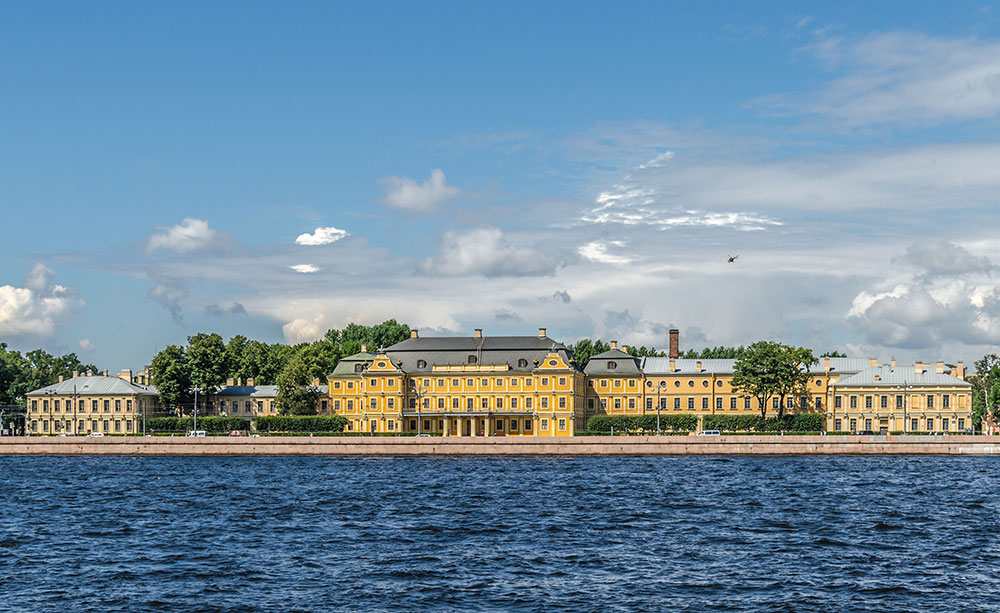
The Academy of Arts
The Academy of Arts was established by Empress Elizabeth I in 1754. This building was designed by architects A. Kokorinov and J.-B. Vallen de la Mothe. The names of many outstanding Russian artists associate with it: painters I. Repin, A. Briullov, F. Bruni, O. Kiprensky; sculptors M.Kozlovsky, S. Pimenov, F. Shubin; architects A. Voronikhin, A. Zakharov. The Embankment in front of the Academy is decorated with two sphinxes brought from Egypt to St. Petersburg and installed here by architect K. Thon in 1832-34.
